The nine-day fiesta got underway at midday to cries of “Viva San Fermin!” at city hall, followed seconds later by the firing of a firecracker known as the chupinazo.
Masses of merrymakers, many wearing traditional white outfits trimmed with red neckerchiefs and cummerbunds, danced and sprayed each other with cheap wine as red and white confetti rained down on them.
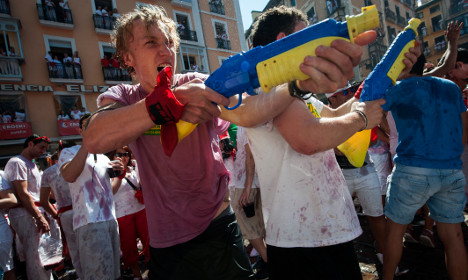 Photo: Miguel Riopa/AFP.
Photo: Miguel Riopa/AFP.
The crowds passed large yellow and black inflatable balls over their heads as scores looked down from packed apartment balconies.
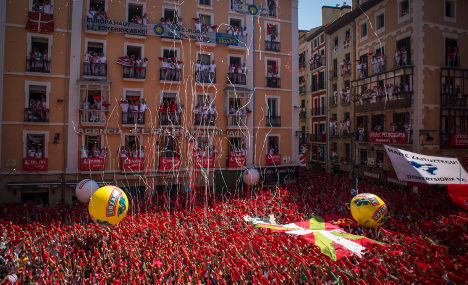 Photo: Pedro Armestre/AFP.
Photo: Pedro Armestre/AFP.
The winner was 85-year-old Jesus Ilundain Zaragueta, who took part in his first Pamplona bull run when he was just 15 and continued into his 60s.
“San Fermin is celebrated in heaven. I am convinced,” he said in an interview published in local newspaper Diario de Navarra.
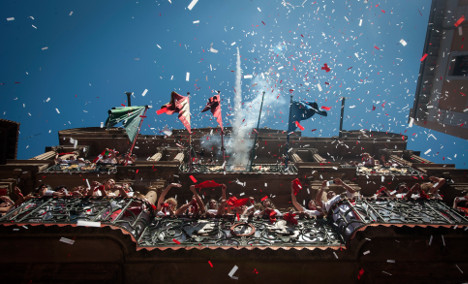 The 'chupinazo' start rocket celebration on the opening day. Photo: Miguel Riopa/AFP.
The 'chupinazo' start rocket celebration on the opening day. Photo: Miguel Riopa/AFP.
The festival in honour of the patron saint of Spain's northern Navarra region – San Fermin – dates back to medieval times it involves religious processions and all-night partying in addition to the hair-raising daily bull runs that have made it famous.
Each day at 8:00 am hundreds of people race with six huge bulls, charging along a winding, roughly 850-metre (more than half a mile) course through narrow streets to the city's bull ring, where the animals are killed in an afternoon bullfight.
The bravest run as close to the tips of the horns as possible without being gored.
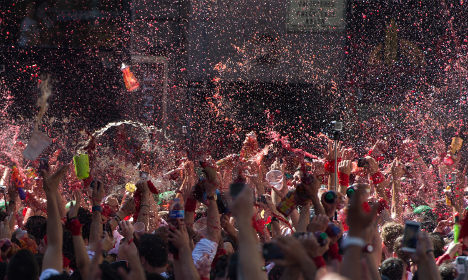 Photo: Miguel Riopa/AFP.
Photo: Miguel Riopa/AFP.
The first bull run, which traditionally draws the largest number of participants, is on Thursday. A run takes on average just under four minutes.
Dozens of daredevils are hospitalized each year. Most of the injuries are not caused by bull horns but by runners falling, or being knocked over and trampled by the animals.
Fifteen people have been killed in the bull runs since modern day records started in 1911.
Besides the risk of injury during the runs, another concern during the festivities is that of sexual assault.
City officials have boosted their efforts this year to combat such crimes by deploying more police, providing better lighting in dark areas and installing high-definition cameras to catch perpetrators on film.
Urine-repellent paint
About 50 semi-naked animal rights activists daubed themselves with fake blood and stood outside of Pamplona's bullring on Tuesday holding signs that read: “Pamplona: Bloodbath for bulls” in several languages.
The festival was immortalized in Ernest Hemingway's 1926 novel The Sun Also Rises and it attracts thousands of visitors from around the world.
Hotel occupancy in Pamplona on the eve of the start of the festival stood at 80 percent, two percentage points higher than during the same time last year, according to the Navarra Hotel Association.
“I think the rise in the number of foreign visitors this year at the national level has had an impact on San Fermin,” the association's secretary general, Nacho Calvo, told AFP.
Pamplona city hall will spend €1.95 million ($2.17 million) on cultural programming during the festival which wraps on July 14th. Over 400 events are planned, mostly concerts.
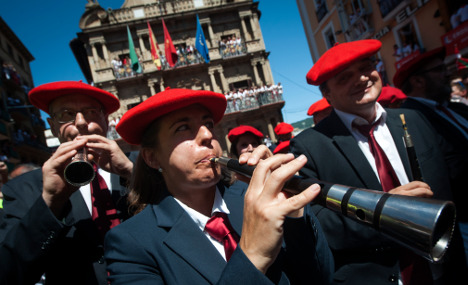 Photo: Miguel Riopa/AFP.
Photo: Miguel Riopa/AFP.
Last year 76 people were fined in Pamplona, a city of around 300,000 people, for urinating in public during San Fermin. The offence carries a fine of €300 ($335) – or half that if it is paid right away.

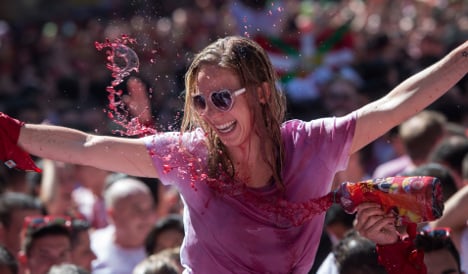
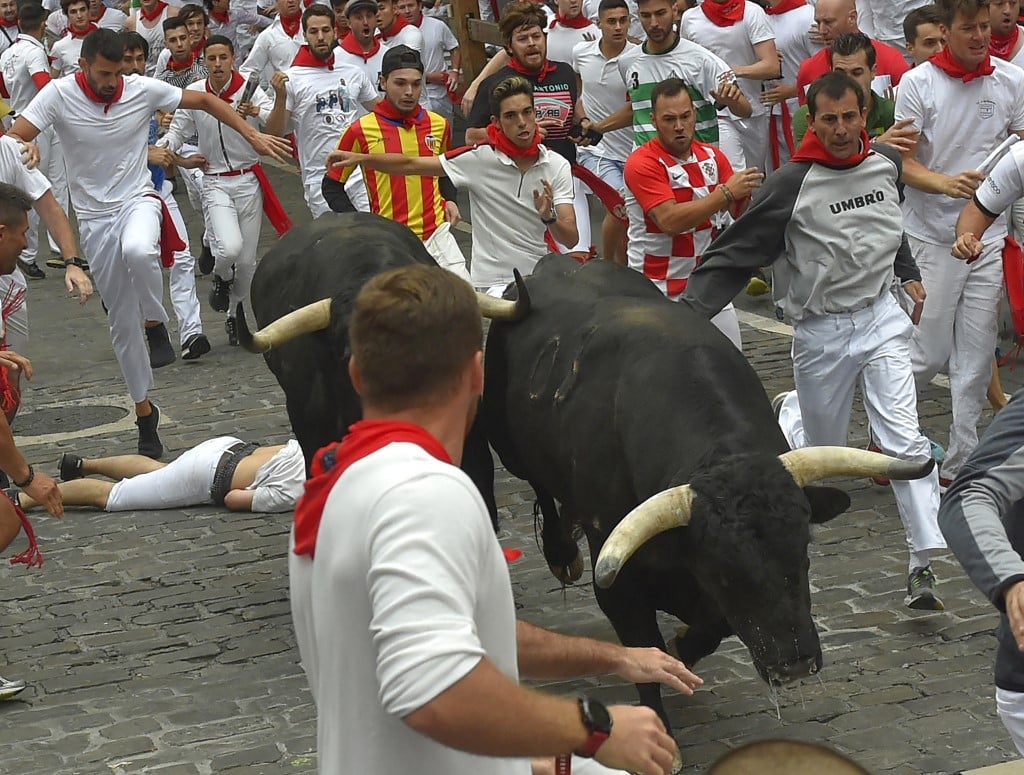
 Please whitelist us to continue reading.
Please whitelist us to continue reading.
Member comments